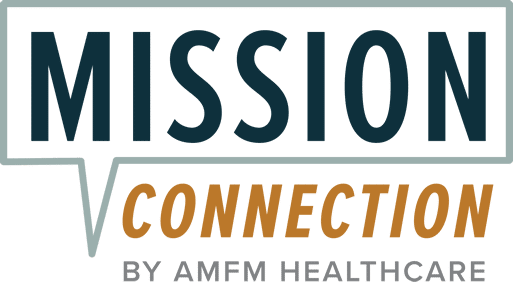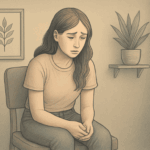Difference Between Baby Blues vs Postpartum Depression (PPD): What You Need to Know

Bringing a baby into the world is often described as a magical and beautiful experience. But what happens when, instead of the joy you’re supposed to feel, you’re teary-eyed, sad, foggy-brained, and finding it hard to bond with your baby?
If you or someone you love has recently had a baby and isn’t feeling quite like themselves, you’re not alone. This is more common than you might think.
The vast majority (70-80%) of new mothers experience mood swings or negative emotions during pregnancy and/or after the birth of their child. These issues usually resolve over a few weeks, in which case they’re called the “baby blues.”
But sometimes, these issues last longer and make it hard for a new mom to function, potentially indicating a more serious problem. When mental health symptoms persist after birth, it’s called “postpartum depression” or “PDD.”
Around 13% of women experience depression post-childbirth. However, PDD, while difficult to cope with, can be treated effectively. The key is to reach out for help.
A mental health professional can help you reclaim your life and create a loving bond with your baby. This article can also work as a useful guide, covering everything you need to know about baby blues vs. postpartum depression, including:
- What the baby blues are
- Symptoms of baby blues
- Treatment for baby blues
- How to identify postpartum depression
- Ways of coping with postpartum mood disorders
- Postpartum depression treatment, recovery, and support
- Where to find professional help for postpartum depression

What Are the Baby Blues?
Symptoms of Baby Blues
- Weepiness or crying bouts
- Sadness
- Irritability
- Anxiety
- Insomnia
- Fatigue
- Impatience
- Restlessness
- Mood changes
- Poor concentration
Treating Baby Blues
Baby blues doesn’t usually need any type of formal treatment or medication because it usually goes away on its own.3 But when it persists, there’s a potential risk of developing postpartum depression, which we will be discussing next.
If you know a new mom going through the baby blues, the following are several non-medical strategies that can help:4
- Encourage them to talk about their feelings and lend an empathetic ear when they do. Alternatively, they can use a journal to record their thoughts daily.
- Advise them to maintain a healthy and nutritionally well-balanced diet after childbirth. They should also ensure they’re adequately hydrated.
- Offer practical support to help them cope. For instance, ask if you can change diapers or look after the baby for a while so she can catch up on some much-needed rest or sleep.
Postpartum Depression: When It’s More Than the Blues
When your baby blue period doesn’t seem to stop or seems to be getting worse, it could sometimes be a sign of postpartum depression (PPD). One out of seven women experiences postpartum depression.
PDD is more serious than the baby blues because it can make it hard for a new mother to go about her daily routine. However, it’s still very treatable.5 Yet, without treatment, PDD could continue for months or years, and cause more serious mental health issues down the line.
The key to remember is that postpartum depression doesn’t have one singular cause. Having PPD doesn’t mean you’re a bad mom or that you don’t love your baby. It just means that your body and mind are reacting to a huge transition in your life, and it’s important to ask for help when you’re finding coping hard.
If you’re concerned about whether you have PDD instead of the baby blues, the following information could help.
Identifying Postpartum Depression
So, how do you know when it’s postpartum depression and not the baby blues?
Here are the key signs of postpartum depression to watch for:5
- Persistent sadness or hopelessness
- Poor concentration
- Feelings of worthlessness and guilt
- Irritability
- Anhedonia (the inability to feel joy and happiness in things that once brought pleasure)
- Insomnia
- Hypersomnia (when a person gets enough sleep but still sleeps during the day or for longer at night)
- Difficulty bonding with the baby
- Thoughts of death or harming oneself or the baby
These symptoms can show up within weeks or months of childbirth and usually don’t go away on their own.
Baby Blues vs. Postpartum Depression: Key Differences
The following information is a quick summary of the key differences between PDD and the baby blues:
- Onset: Baby blues can start within 2 to 3 days after birth. Postpartum depression may start during pregnancy or within a few weeks (usually 4 weeks) or months after birth.
- Duration: Baby blues usually resolve on their own within a period of 2 weeks. Postpartum depression can go on for months.
- Intensity: Baby blues symptoms are usually mild, while postpartum symptoms are moderate to severe in nature, usually making it hard for the mom to cope or get through her day.
- Need for treatment: Baby blues generally doesn’t require any treatment as it subsides on its own. Postpartum depression, on the other hand, does need treatment, but treatment can be very effective in helping a mother reclaim her old sense of self.
Coping With Postpartum Mood Disorders
When you’re struggling with postpartum mood disorders, it can sometimes feel like no one understands. You may even believe that you’ve failed in some way. It’s normal to experience such thoughts when coping with postpartum mood disorders, but PPD isn’t anyone’s fault.
Postpartum depression is considered a medical condition and therefore needs real care – just like any physical medical concern.
The first step in coping with postpartum mood disorders is recognizing whether you have one. While the symptoms above can help, the following section highlights why some mothers are more at risk of PDD.
Factors Influencing Mental Health Challenges After Childbirth
Researchers are still unclear about what causes postpartum depression, but there could be a number of factors at play, including:3,6
- Hormonal changes: Levels of the hormones estrogen and progesterone drop rapidly after delivery, which can increase the risk of mood disorders
- Genetic predisposition: A family history of psychiatric disorders may increase the risk of developing postpartum depression. This risk may increase depending on the environmental and social circumstances the mother grew up in.
- Psychosocial stressors: Risk can increase if the mother has a history of depression or anxiety, PMS (premenstrual syndrome), a negative attitude toward the baby, a history of abuse, and so on. Additionally, the mother may not have adequate support at home.
- Stress during pregnancy or delivery: Sometimes, postpartum depression may be linked to a high-risk pregnancy, hospitalization during pregnancy, or traumatic events that may have taken place during pregnancy. Traumatic events may include an emergency C-section or a low birth weight baby, among others.
- Lifestyle factors: Such as unhealthy diet, nutritional deficiencies (for example, a deficiency in Vitamin B6 is linked to mood regulation), lack of exercise, poor sleeping habits, and the stress of a newborn.
Being aware of these factors can help a new mom recognize the symptoms of PPD. The next step in coping with postpartum depression is knowing how to treat it.
Postpartum Depression Treatment
If you suspect postpartum depression, it’s important to talk with your medical care provider. Because PPD is considered a medical condition, you’ll need a formal assessment by a qualified professional. If they diagnose PPD, they’ll likely talk to you about your treatment options.
There are a number of approaches used to treat postpartum depression, including:
Psychotherapy/Talk therapy: Talking through your problems with a mental health professional can help you make sense of what you’re going through and learn effective coping strategies to deal with them.
Some of the talk therapy options for postpartum depression include cognitive behavioral therapy (CBT) and interpersonal psychotherapy (IPT). CBT can help you identify unhealthy thought patterns that may be contributing to your emotions and establish new ways of looking at problems. IPT is beneficial for managing relationships and dynamics that could be contributing to postpartum depression.
At Mission Connection, we don’t look at just alleviating symptoms. We offer educational resources, life skills training, and personal development to help you build tools to sustain your recovery for the long term.
Medication: Medications for PPD include antidepressants and neurosteroid therapy. Antidepressants are prescribed for moderate to severe depression. Plus, a neurosteroid called zuranolone that can be taken orally has been specifically approved by the FDA for treating postpartum depression.7
The FDA has also approved another neurosteroid called brexanolone for PPD, but this medication is only administered via IV under medical supervision due to the potential for side effects. It may also not be safe to take this medication if you’re pregnant or breastfeeding.
Sometimes, other medications may be prescribed based on the person’s needs, such as mood stabilizers.
Transcranial Magnetic Stimulation (TMS): TMS is a non-invasive procedure where magnetic waves are used to stimulate specific parts of the brain. It’s usually well-tolerated, and serious side effects are rare.
Lifestyle interventions: Your healthcare provider may review your eating, sleeping, and exercise habits and make recommendations if needed.
Partner and family involvement: Partners and families can be included in therapeutic planning and interventions so they can learn more about PPD and how to best support the mom.
Supporting a Mom Through Postpartum Mental Health Struggles
Providing meaningful support for postpartum mothers is critical for their well-being, as sometimes they are hesitant to ask for help. The following are ways you can support a mom through PPD:
- Gently guide them toward talking about their feelings while you listen without judgment
- Introduce the idea of getting professional help. Early intervention can make a world of difference
- Offer practical support with daily tasks and responsibilities. For example, help them find a healthcare provider or drive them to appointments
- Help them access resources, such as the National Maternal Mental Health Hotline
- Encourage them to pursue the things that previously made them happy, whether it’s hobbies or other personal interests.
Get Help for Postpartum Depression at Mission Connection Healthcare Today
At Mission Connection Healthcare, we understand how overwhelming becoming a new mother can be – let alone how difficult mental health challenges can make this stage of life. For this reason, our focus is always on compassionate and expert support that sees you as an individual and not just another case to be treated.
Our treatment options for postpartum depression include psychotherapy, medication, family therapy, and TMS. These options can also be included in residential, outpatient, online talk, and telehealth packages to suit your lifestyle.
To learn more about how Mission Connection Healthcare can support you or your loved one, contact our team – a member will reach out to schedule a personalized consultation.

References
- South Dakota Department of Health. (n.d.). Postpartum depression. The First 1000 Days: You and Baby. Retrieved June 10, 2025, from https://doh.sd.gov/topics/mch/pregnancy-early-childhood/first-1000-days/you-and-baby/postpartum-depression/
- American Pregnancy Association. (2023, November 25). Baby blues. https://americanpregnancy.org/healthy-pregnancy/first-year-of-life/baby-blues/
- Carlson, K., Mughal, S., Azhar, Y., & Siddiqui, W. (2025, January 22). Perinatal depression. StatPearls – NCBI Bookshelf. https://www.ncbi.nlm.nih.gov/books/NBK519070/
- Office on Women’s Health. (n.d.). Postpartum depression. OASH | Office on Women’s Health. https://womenshealth.gov/mental-health/mental-health-conditions/postpartum-depression
- South Dakota Department of Health. (n.d.). Baby blues vs. postpartum depression. The First 1000 Days: You and Baby. https://doh.sd.gov/topics/mch/pregnancy-early-childhood/first-1000-days/you-and-baby/postpartum-depression/
- Suryawanshi, O., & Pajai, S. (2022). A comprehensive review on postpartum depression. Cureus. https://doi.org/10.7759/cureus.32745
- U.S. Food & Drug Administration. (2023, August 4). FDA approves first oral treatment for postpartum depression. https://www.fda.gov/news-events/press-announcements/fda-approves-first-oral-treatment-postpartum-depression






